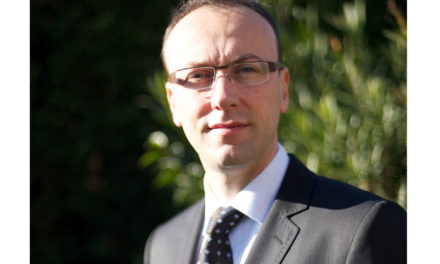The French Airforce’s 68 Antilles-Guyane Transport Squadron plays a central role in protecting the Guiana Space Center. Fennecs and Pumas stand watch over this unique French overseas department.
Stationed Air Base 367 Capitaine François Massé, adjacent to civil airport Cayenne Rochambeau, the ET (Transport Squadron) 68 is a unique unit made up of helicopters and airplanes. Within the squadron, responsibilities are shared equally between fixed-wing and rotorcraft pilots: if a commanding officer is a helicopter pilot, his or her deputy is a plane pilot, and vice versa. The ET 68 currently has 12 aircraft: three transport Casa 235s, four AS555 Fennec helicopters and five SA330 Pumas. This solid fleet allows the unit to carry out its two main missions: Titan et Harpie. Titan protects the activities of the Guiana Space Center, which launches a dozen rockets each year. Harpie is about preserving the Amazon rainforest, using French forces to combat illegal gold panning.
Fennecs: the last line of defense
“Whenever a rocket is exposed, when it’s moving from one building to another to receive its payload, or when it’s placed on the launchpad, we activate a Special Air Safety Plan (Dispositif Pariculier de Sûreté Aérienne, DPSA),” explained a French Air Force spokesperson. “It’s implemented about 60 days a year.” The weaponized branch of the DPSA is the airborne component of Titan: Fennecs with expert marksmen onboard.
The ET 68’s four Fennecs can be equipped with an Ultra 7000 video camera, placed just below the fuselage. Combined with night vision goggles, it ensures high performance levels even after dark. The Ultra 7000 also enables crews to spot men and equipment hidden beneath the jungle canopy, as long as humidity is not too high—so not all that often given the region’s climate.
The Fennecs carry sharpshooters trained to handle several different scenarios: intruder ULMs, drones or lightweight planes in the no-fly zone. The snipers mainly rely on two types of weapons: the automatic Heckler & Koch HK 417, for precision work, and the 12-gauge FN Herstal tactical police shotgun. The latter is used to fire warning shots with signal lights, but can also be used with 9-pellet buckshot rounds to destroy small targets such as drones, kites, balloons, or even lightweight planes and other ULMs, if close enough. The HK 417 is used to destroy distant targets. “The holographic Eotech site mounted on the HK 417 is perfectly suited to our needs,” explained the marksmen. “It allows us to keep both eyes open for an overall view of our environment without losing sight of the target.” At night, the Eotech sight can also be used with night vision goggles and a laser pointer. The Fennec handles the exercise perfectly: though the cabin is a bit narrow, there’s ample room for a sniper and team leader. The aircraft is maneuverable, stable, vibrates comparatively little, and guarantees optimal precision. The Fennec has proven itself perfectly designed for interception missions.
Intense missions for the Pumas
The ET 68’s five Pumas also play a crucial role in Guiana, which is as big as Austria and 94% covered by rainforest. Guiana is currently facing two major problems: massive illegal immigration from Brazil and Surinam, and illegal gold panning. The Pumas are heavily involved in combatting the latter: “We’re at the top of the peacetime lineup,” prefaced the pilots before explaining the difficulties and risks their missions involve. “The landing sites are precarious, the weather conditions are often difficult, the distances flown are long, and the rainforest is not a great place to have your engine die…”
The Pumas form intervention groups during operations to combat gold panning. The missions sometimes become real war operations, when inconvenienced gold panners open fire on the French forces. The soldiers are always equipped with bullet-proof vests for these operations, like in the Sahel. The Pumas can be equipped with a 20mm canon fired through a port to increase firepower. About every eight months, the teams engage in shooting trainings to maintain their expertise. They are also responsible for medical evacuation missions, in the jungle and at sea—one helicopter remains on call for this 24/7. Three of the five Pumas are equipped with two additional 350L fuel tanks, located in the balloons above the landing gear. Combined with the 1,550 liters on board, that makes for a total of 2,250 liters of fuel, for over three hours of autonomy. Flight time can be further increased by bringing aboard 450L tanks in the cabin—but that, of course, reduces the payload. In Guiana people say that the big cruise liners wait to cross over into French waters before calling for medical evacuations, since the French forces do a better job than those in Surinam or Brazil.
The Guiana Pumas need to be replaced in the near future. The aircraft are old and their sturdiness is no longer enough to make up for all the problems caused by their age. Cayenne is scheduled to receive two H225M Caracals in 2025, which offer much better autonomy and payload abilities. The new aircraft would, in turn, improve operational efficiency.
Nearly 50 years of helicopters in Guiana
The French Airforce’s Guianese adventure began in 1974, with an Alouette III. Over the next several years, Air Base 367 Capitaine François Massé was built in Cayenne, neighboring the civil airport. The rapid development of the Ariane space program led to further involvement of the French military in this overseas department. Helicopters were needed to protect the launchers, which began to play increasingly crucial economic and strategic roles. Hangars were built and the Alouettes were replaced by Fennecs, supported by Transalls and Pumas. From 2008 to 2012, things really took off with the construction of new hangars and parking lots, and the expansion of living quarters, to accommodate the arrival of ETOM (Overseas Transport Squadron) 58, which moved over from the Antilles in 2012. Its three transport Casa 235-200s joined the fleet of EHOM (Overseas Helicopter Squadron) 68 Guyane to form what is now known as the ET (Transport Squadron) 68 Antilles-Guyane.
Modern radar for better surveillance
Since July 2016, a Thales GM406 radar system has ensured aerial surveillance in Guiana. This new system—the first of its kind to be used in France—practically doubles the performance of the Centaur radar system it replaced. With a single sweep of its antenna, it scans all of Guiana from the ground up to level 300. It is located on a rocky cliff 160 meters above sea level and 17 kilometers from the space center. The infrastructure work done so it could be installed (ground leveling, new road, power lines, etc.) gives a good idea of the kind of investments the French government is willing to make to protect the Guiana Space Center: the radar system and associated work cost a total of €33 million.
By Frédéric Lert
©photo: F.Lert
















